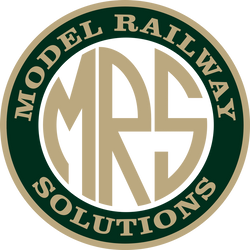
Railway Company Items SR 1923-36 livery (top right of sheet) Letters were normally, as large as would fit. Ordinary wagons and vans usually had number bottom left of side in the larger (5") figures with e.g. TARE 7.2. 1 bottom right and load e.g. 10 TONS above it. Letter N if non-common user at extreme ends alongside or below number and tonnage. Cattle wagons had large SR on side, number in small figures on solebar. Other markings on left side of ends: number (5") just above halfway up with 5" SR above it TARE 6. 13. 1 etc., just above drainage gap at bottom and 10 TONS etc., halfway between. SR 1936 - 47 livery (top left of sheet) Number (4" size) bottom let capacity (e.g. 7. 10 (no words)) but sometimes as e.g. 8. 1.0 with T.C.Q. above. Letters N as before when applicable, but at left hand end only after 1940. Special vehicle markings (top, left of centre of sheet) were common to both periods - positions vary according to type of vehicle. Venetian red insignia is for Meat vans etc. painted stone colour - these sometimes had white letter N. LONDON & SOUTH WEST Small letters L&SWR used until 1895-1900 when the large letters LSWR were used where space permitted with the smaller size on low sided vehicles (e.g. bolsters). Numbers were usually in 6" figures - position varied but open wagon typically had number at right second plank up with load below it in script. Tare shown e.g. 6.18.2 (no word) at left in 2½ " figures (smallest SR size) at same height as number. Many vans had number top, centre or right, with tare sometimes right of centre. Road vans marked LOAD ONE TON at bottom of side doors. LONDON BRIGHTON & SOUTH COAST RAILWAY Low sided vehicles (and others in early days) seem mostly to have been lettered LB&SCR (sometimes with full stops). The largest size LB&SCR was used on Cattle wagons. Large LBSC was final standard type for vehicles large enough to take it with 6”figures on ordinary vehicles but 10" figures on brake vans, the number being towards left of vehicle. Tare usually bottom left, e.g. 7.4.2 (use smallest SR figures). Vehicles with small size letters often had matching size or smaller nos. (sometimes proceeded by No.) alongside or below the letters. SOUTH EASTERN & CHATHAM RAILWAY Ordinary wagons and vans normally lettered as for pre-1936 SR except tare was marked on solebar. Use standard SR tare nos, 5" size figures and TONS. Smallest letters SECR used on bolster wagons with number to left, tare to right and 12 TONS just left of it, all in same size figures. Many other low sided and earlier wagons lettered SE&CR. Brake vans had S E C R high on side with GOODS BRAKE below E and C. Typical London Chatharn and Dover Railway open wagon marking was L.C.D.R. across middle of side doors. Number e.g. No875 halfway tip left hand side, load e.g. To Carry 6 Tons at bottom of left side and tare e.g. 6.17.0 (no word) bottom of right side. South Eastern Railway brake vans of Road Van type were lettered S.E.R. GOODS BREAK between doors and droplight 2/3rds way up side with the number below 'GOODS' in same size as letters S.E.R.
